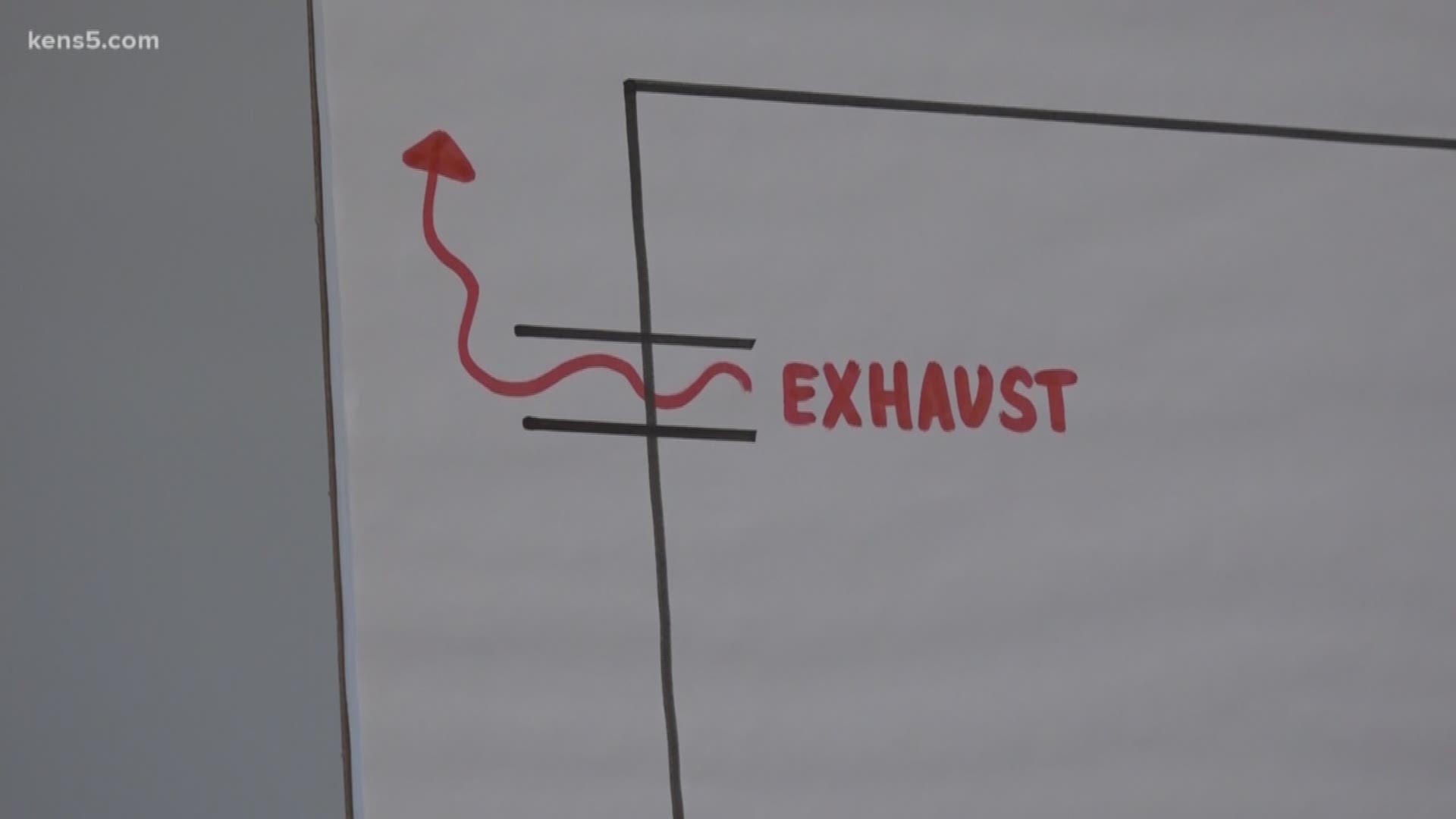SAN ANTONIO — At Methodist Hospital Texsan, officials on Friday explained how they are keeping one coronavirus case from becoming many more.
As the only local hospital treating a patient with the virus, officials said they wanted to alleviate anxieties inside and outside the facility as much as possible.
At a Friday afternoon briefing, Methodist Healthcare Chief Medical Officer Paul Hancock listed many of the procedures the staff is using to contain the spread of the disease.
A hospital spokesman said the individual tested positive for COVID-19 while under quarantine at Lackland AFB, but is stable now at Methodist Texsan with mild symptoms.
"First of all, I want everyone to understand there is a very well-defined process for the protective equipment that our staff wear," Hancock said, adding that the process was developed not by the hospital, but by infectious disease specialists around the world.
Hancock said, "There are very specific guidelines on how our employees put on and take off protective equipment and we follow this very strictly every time."
Hancock brought a show-and-tell display to help tell the safety story.
"We're going to show the elements of the protective equipment first, which includes the gown, the mask, the face shield and gloves," Hancock said.
Hancock said the gowns worn by staff members are made from an impervious material.
Masks, Hancock said, are specialty items that offer a very tight fit around nose and chin, providing a life-saving filter.
"This is not like the mask a person would buy at the drug store. This is a specific kind of mask, designed to prevent the spread of infection," Hancock said.
Another element of the plan includes a face shield, which protects against airborne contamination, and finally, Hancock said, gloves are worn that cover the cuffs of the protective gown.
Hancock said donning the protective gear is a process that is accomplished by the staff member who provides direct patient care, but the whole procedure is always monitored by a second employee to make sure no steps are skipped.
When the staff member leaves the patient's isolation room, they pass through a decontamination area where they remove protective clothing and wash their hands with soap and water or an alcohol solution.
Hancock said the procedures that take place in and around the patient room are only a part of the safety plan, which began before the patient arrived in a dedicated San Antonio Fire Department EMS unit.
RELATED: CDC: Risk to community 'still low’ after confirmation of coronavirus patient in San Antonio
"The patient was brought in through a special, dedicated entrance," Hancock said, adding there was no chance of public contact as the patient made it into their isolation room.
Hancock said all hospitals have isolation rooms to treat patients with special infectious conditions.
"This is a negative-pressure room. The reason it's called a negative-pressure room – the key to this whole room – is a specialized dedicated exhaust system that generates air flow going outside of the room (and) away from the rest of the hospital," Hancock said, while using a diagram of the layout of the room. "There's no way the air that's in this patient room could re-circulate in the rest of the hospital."
Hancock added they also post signs outside the patient room to warn anyone in the area to use caution.
"On the door of the anteroom, there would be a sign on the door like this saying the patient is under enhancement precautions. Specifically in this case, airborne, contact and standard contact precautions," he said.
Hospital officials declined to answer questions about the process, but in closing, Hancock said he believes San Antonians couldn't be safer and he is proud of the role his group has in fighting this battle.

